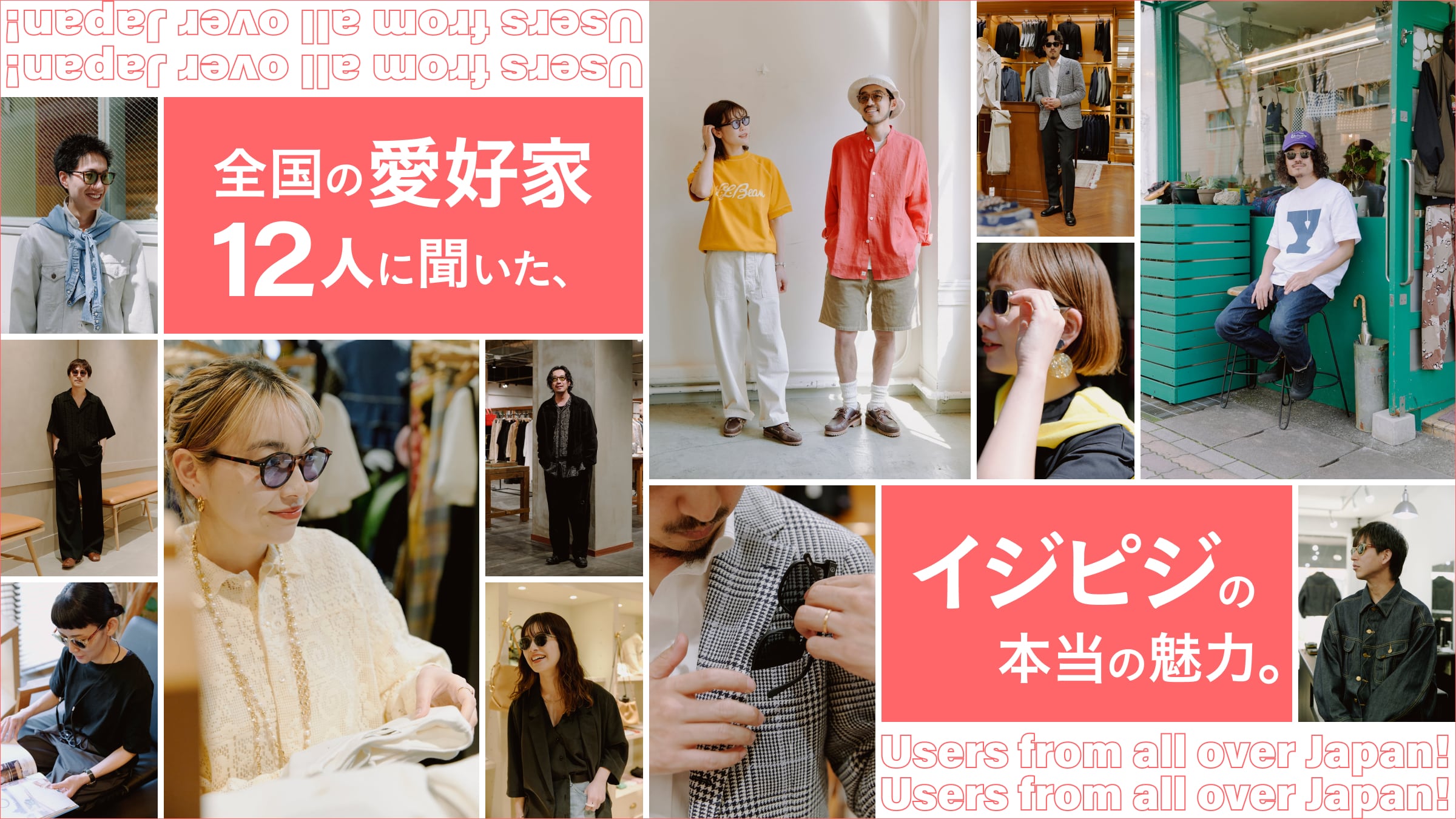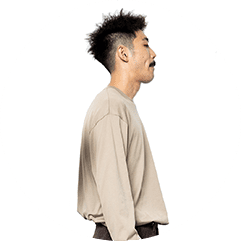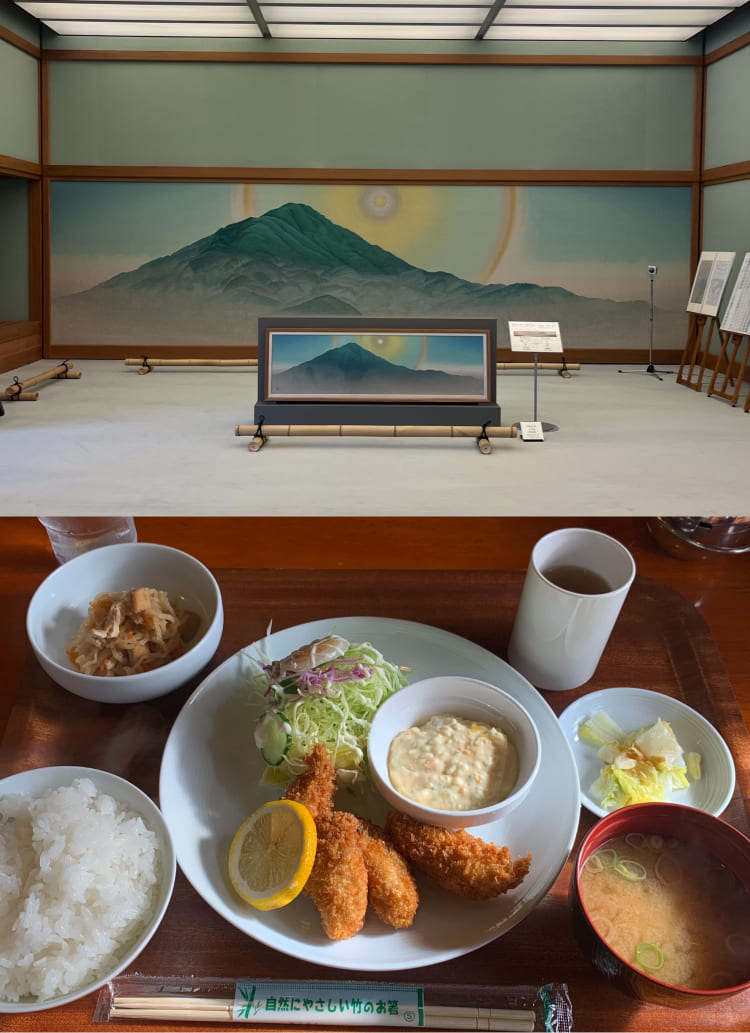The real beauty of "Ijpigi" from the eyewear stylist's point of view.
PROFILE

Born in Kumamoto in 1989. After working in an optician's store for about 10 years, he became an independent eyewear stylist. Currently, he serves customers at his eyewear stores "Asatokaze" in Ryogoku and "Downtown" in Tsukishima, and teaches eyewear customer service as an on-the-job training instructor. He has also obtained the national certification of "Technician of Eyeglass Making Level 1".
Instagram:@sky.miku
First of all, how did you feel about the eyewear choices of the people who appeared in the national snapshots?
Nakajima: I knew that everyone is fashionable, so I was impressed by the way they chose items that fit them while keeping the key points in mind. It really suits you, doesn't it?
Thank you very much. I would like to ask you about yourself and eyewear.
Nakajima: I used to like working in sales and was working for an outdoor manufacturer, but one day, one of their customers at the time asked me if I would work for them because they were opening an optician's shop. I was 23 years old. That was when I was 23 years old, 12 years ago. I became an independent eyewear stylist in 2022.

How many pairs of eyewear do you currently own?
Nakajima: I have a collection case that holds 15 bottles, and anything that overflows from that is packed in my suitcase (laughs).
What is your design preference?
Nakajima: I have changed a lot between my 20s and 30s. When I was younger, I liked strong designs with black rims and the like, but as I get older, I think I like lighter colors. Double bridges are probably more common.
Eyewear trends change rapidly, don't they?
Nakajima: I feel that very much. Especially when it comes to sunglasses, in the past, only dark lenses were sold and the perception was that they were just for reducing glare. Then, with the advent of masks in Corona, the use of thin colored lenses, which are also available at Ijpigi, has spread rapidly, hasn't it?

Asato-kaze, your store, carries many imported brands. Is there any difference in trend between Japan and overseas?
Nakajima: There are trends, but cultural differences are probably stronger. For example, in other countries, lenses thin enough to show the eyes are called "dress glasses" and are considered formal wear. Many people wear them with tuxedos. Also, Westerners have thinner pigmentation and are more sensitive to glare than Japanese, so darker lenses are by far the norm.
Have you heard of Ijpigi?
Nakajima: Of course. But today was the first time I saw the real thing. For under 10,000 yen, I think this quality is just right for people who are making their eyewear debut. The design is basic and looks easy to use.
The temples and other parts open outward so they can fit any person's face.
Nakajima: They have spring hinges (the temples open outward). And you also have polarized (polarized lenses)!


Yes, that's right.
Nakajima: That's what makes this price range so attractive that no other brand can match.
Which model would you choose from the IZIPIJI lineup?
Nakajima: I might prefer the bi-color model. The shape is authentic, easy to use, and trendy. You can tell when you wear it, it's surprisingly lightweight.
What do you think of the other models from a professional's point of view?


Nakajima: The playfulness of the colors is still very French. On the other hand, the shape is authentic, so it will fit anyone, and I think that is the secret of its popularity. I feel that no matter which one you choose, you can't go wrong.
I see that you have given us some hints on how to choose eyewear in your snapshots, but I would like to ask you if you have any other tips on how to choose eyewear.
Nakajima: As we age, our eyes become dimpled and dark circles become more noticeable, and many people wear eyewear to hide these dark circles. However, if you make a mistake, it can make you look even older. There are three different colors for dark circles: green, brown, and black, and they differ from person to person. By incorporating their complementary colors in eyewear, they become less noticeable. Purple eyewear will also make dark circles less noticeable.
You say it has something to do with skin color and other factors.
Nakajima: Yes, it is. In terms of lens color, blue is very difficult. It can make some people look pale. I think it would be good if you could pay attention to that as well.
It is also important to match accessories, not so much in terms of color, but rather in terms of atmosphere, to make the whole look cohesive. For example, if the accessories are strong like Indian jewelry, the eyewear should also be strong. For example, if the accessories are delicate, the eyewear should also be strong, while if the accessories are delicate, they should have thin rims.
Thank you very much. Lastly, please tell us again about the appeal of "Ijpigi" and what you would like to see in the future.
Nakajima: I feel that frame colors should be a little more Japanese-oriented. Japanese people would be more likely to pick up a pair in a more subdued color, such as black or brown. However, I think the design and hinge specifications are really great. And for this price, it's a great product.
Until I saw the actual product, I didn't expect the quality to be so high. Maybe my eyes have changed a bit. I think I will be taking care of them this summer, too!
- 1
- 2









